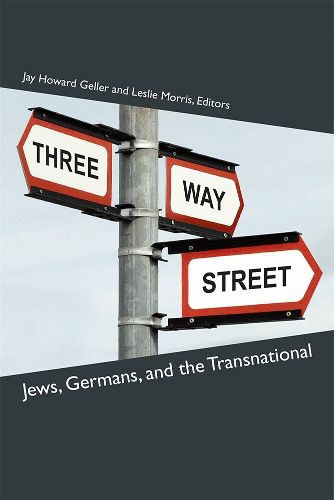Readings Newsletter
Become a Readings Member to make your shopping experience even easier.
Sign in or sign up for free!
You’re not far away from qualifying for FREE standard shipping within Australia
You’ve qualified for FREE standard shipping within Australia
The cart is loading…






As German Jews emigrated in the 19th and early 20th centuries andas exiles from Nazi Germany, they carried the traditions, culture,and particular prejudices of their home with them. At the same time,Germany-and Berlin in particular-attracted both secular and religiousJewish scholars from eastern Europe. They engaged in vital intellectualexchange with German Jewry, although their cultural and religiouspractices differed greatly, and they absorbed many cultural practicesthat they brought back to Warsaw or took with them to New York and TelAviv. After the Holocaust, German Jews and non-German Jews educatedin Germany were forced to reevaluate their essential relationship withGermany and Germanness as well as their notions of Jewish life outsideof Germany.
Among the first volumes to focus on German-Jewish transnationalism,this interdisciplinary collection spans the fields of history, literature, film,theater, architecture, philosophy, and theology as it examines the livesof significant emigrants. The individuals whose stories are reevaluatedinclude German Jews Ernst Lubitsch, David Einhorn, and GershomScholem, the architect Fritz Nathan and filmmaker Helmar Lerski; andeastern European Jews David Bergelson, Der Nister, Jacob Katz, JosephSoloveitchik, and Abraham Joshua Heschel-figures not normallyassociated with Germany. Three-Way Street addresses the gap in thescholarly literature as it opens up critical ways of approaching Jewishculture not only in Germany, but also in other locations, from the mid-19thcentury to the present.
$9.00 standard shipping within Australia
FREE standard shipping within Australia for orders over $100.00
Express & International shipping calculated at checkout
As German Jews emigrated in the 19th and early 20th centuries andas exiles from Nazi Germany, they carried the traditions, culture,and particular prejudices of their home with them. At the same time,Germany-and Berlin in particular-attracted both secular and religiousJewish scholars from eastern Europe. They engaged in vital intellectualexchange with German Jewry, although their cultural and religiouspractices differed greatly, and they absorbed many cultural practicesthat they brought back to Warsaw or took with them to New York and TelAviv. After the Holocaust, German Jews and non-German Jews educatedin Germany were forced to reevaluate their essential relationship withGermany and Germanness as well as their notions of Jewish life outsideof Germany.
Among the first volumes to focus on German-Jewish transnationalism,this interdisciplinary collection spans the fields of history, literature, film,theater, architecture, philosophy, and theology as it examines the livesof significant emigrants. The individuals whose stories are reevaluatedinclude German Jews Ernst Lubitsch, David Einhorn, and GershomScholem, the architect Fritz Nathan and filmmaker Helmar Lerski; andeastern European Jews David Bergelson, Der Nister, Jacob Katz, JosephSoloveitchik, and Abraham Joshua Heschel-figures not normallyassociated with Germany. Three-Way Street addresses the gap in thescholarly literature as it opens up critical ways of approaching Jewishculture not only in Germany, but also in other locations, from the mid-19thcentury to the present.